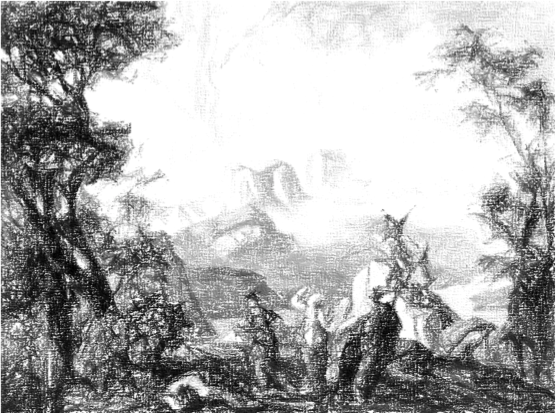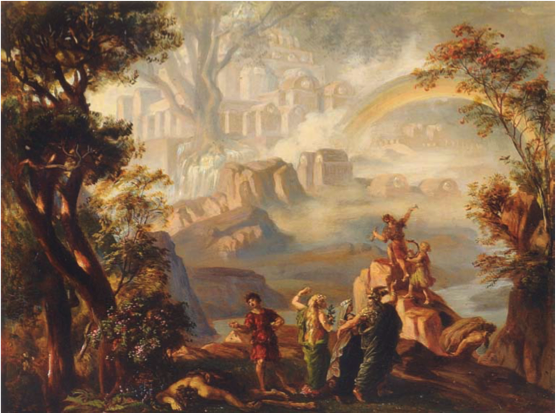Music Guide Rhinegold
Wagners Oevre holds many musical mysteries. The Rhinegold is no exception:
- Why are Camouflage Helmet- and Loge-Motif related?
- Why are so many Leitmotifs related to the Rhinegold-Motif?
- What are Wotan's secret plans?
The Rheingold music guide provides answers. A short synopsis of each scene provides an immediate overview.
The leitmotifs and musical design of the work are clearly explained using musical examples.
The
audio samples make the explanations easy to understand.
Scope
- 52 pages
- 39 sheet music and audio examples, playable in the browser of your smartphone or PC
Reading sample
The couple's conversation is suddenly interrupted by Freia, who is fleeing from the giant Fasolt, who had rather rudely threatened to pick her up as a playmate. We can hear her horror in the music; it is no coincidence that it reminds us of the love distress motif (example 5):
♫ Example 20: Derivation of the escape motif. In the audio example, the love distress motif (upper system), then the escape motif (lower system) is played.

The rushed character of the motif is aptly called escape motif. As can be seen from the marked notes [A] to [D], the motif is related to the love distress motif. Like Alberich, Freia is distraught at the perceived lack of love, as she realizes that Wotan was willing to sell her off to the giants.
A little later, even Fasolt, in love, adopts the motifs of Freia, the goddess of love, rendered in her actual, tender form:
♫ Example 21: Motifs of the goddess of love Freia: growing desire and longing for love

Freia's motifs consist of two sequences, both of which are identical to the sequences from the escape motif and differ only in instrumentation, harmony and tempo.
The first, ascending sequence, which marked Freia's growing fear in the escape motif, also symbolizes a rather more positive growing feeling in this motif - the blossoming of love.
The second sequence symbolizes the longing for love and appears in the Ring in a wide variety of forms. Depending on the state of mind of the people involved, it can depict a pent-up, unsatisfied sex drive (Alberich's love distress motif, example 5) or, as is the case in Freia's escape motif (example 20), it is a sign of her desperation at being no longer loved by Wotan. In Fasolt's case, in the example shown here, it illustrates the longing for tender love.
This sequence representing longing for love runs like a red thread through Wagner's works. In addition to the Ring, he also uses it in Tristan, Die Meistersinger, Parsifal and Lohengrin (...)
Samples
To hear all the audio examples click on the image


- Becoming motif
- Becoming and wave motif
- Rhine daughters’ motif
- Alberich's appearance
- Love distress motif
- Woe motif
- Caught one of you this fist!
- Rhine gold fanfare
- Rhine gold motif
- renunciation motif
- Ring motif
- Deriv. ring motif
- Ring motifs
- Love curse motif
- Valhalla motif
- Derivation Valhalla motif
- Contract motif
- Derivation contract motif
- Love spell motif
- Escape motif
- Freia motif
- Longing for love sequence
- Giant motif
- Loge motif
- Magic fire motif
- Woman’s worth motif
- Stretched love distress motif
- Forge motif
- Derivation forge motif
- Camouflage helmet motif
- Brooding motif
- Hoard motif
- Dragon motif
- Hate motif
- Curse motif
- Erda motif
- Twilight of the gods motif
- Thunder motif
- Sword motif
 MusiCosa
MusiCosa
